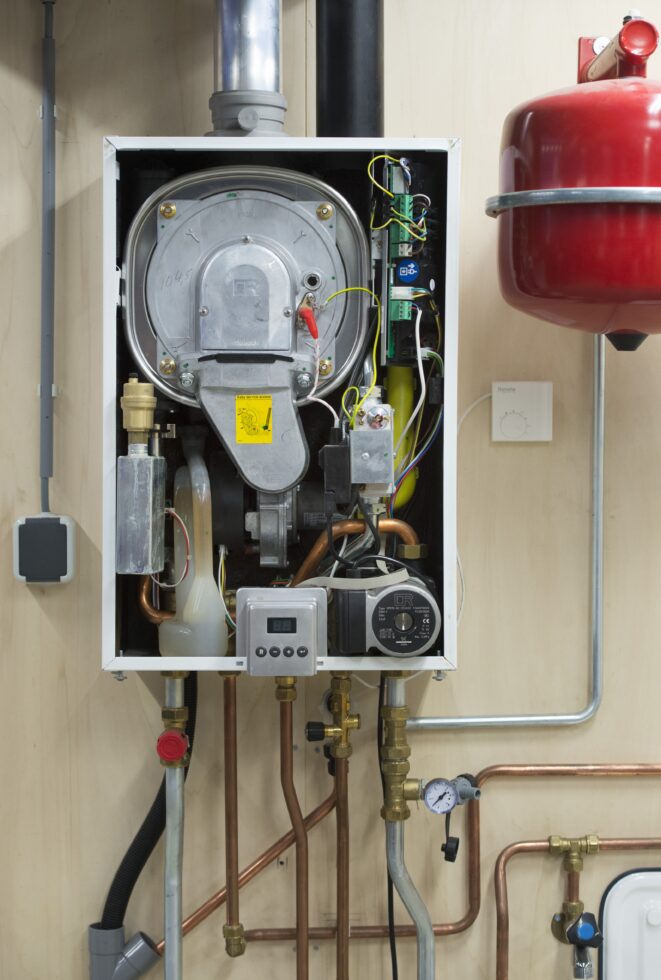
Carbon monoxide - Understated and misunderstood danger
Investigation by the Dutch Safety Board to carbon monoxide accidents shows that 46% of the accidents happen with a central heating system; most modern and well kept. This is different from the image that especially old geysers or poorly maintained equipment would produce too much carbon monoxide. The Board also says in the report released today that periodic maintenance on installations no adequate protection against carbon monoxide accident. The various quality labels such as mark approvals and certifications to offer little guaranteed for actual professional construction and safe maintenance. Also carbon monoxide detectors perform their warning function not flawlessly. So far, it is assumed that each year at least five to ten deaths by exposure to an increased concentration of carbon monoxide and several hundred wounded. The estimation of the Dutch Safety Board is the dimension of the problem with carbon monoxide three to five times as big. The symptoms of carbon monoxide poisoning, however, are often not recognized so that a correct diagnosis is not provided.
Understated and misunderstood danger
Throughout the Netherlands, there are still people who are unaware of the risks of illness and even death associated with exposure to carbon monoxide in the home. These risks are nonetheless present in over 90 percent of the Dutch homes that have gas installations. All of the parties involved, from residents and home owners to installers, manufacturers, government bodies and the emergency services, lack sufficient knowledge of the scope of this problem and its defining characteristics. It is the view of the Dutch Safety Board that each of these parties bears responsibility for the prevention and management of carbon monoxide accidents.
To begin with, residents and owners have a crucial personal responsibility for the safety of the combustion installations in their homes. The general assumption among all the parties is that the potential for carbon monoxide hazards is limited to homes where this responsibility is neglected. This can occur, for instance, when open, non-flued appliances are used in areas with insufficient ventilation and with appliances that receive insufficient maintenance. That assumption, however, has proven wrong. In many of the accidents it investigated, the Safety Board found that residents and/or owners had acted in accordance with their responsibility to ensure that their installation was functioning safely. Many had their gas furnaces installed and/or periodically maintained by a professional installer with a quality certification. This finding has led to a review of the overall picture and indicates that efforts to reduce accidents should not focus exclusively on residents/owners, but should also identify areas for improvement among manufacturers and installers.
Manufacturers are responsible for producing installations that are safe. The Safety Board has observed, however, that manufacturers do not produce failsafe installations that shut down automatically when a potentially hazardous situation arises. Moreover, manufacturers fall short when it comes to producing foolproof installations, which limit the risk of incorrect use by residents/owners and installers. In addition, some of the carbon monoxide detectors on the market are unreliable.
Installers, meanwhile, have a duty to ensure the that gas appliances are safely installed and maintained. However, the Safety Board has discovered that this duty is not being properly fulfilled. In the majority of cases, professional maintenance work is limited to the appliance itself. Installers do not check whether the entire installation is functioning safely in conjunction with the building’s system. Furthermore, installers are not always fully competent. The existing safeguards to ensure acceptable quality standards among installers are insufficient.
What can be done to resolve the problems among installers and manufacturers identified in this report? Government action in this area has been tending towards deregulation and, in view of this trend, the Safety Board acknowledges that recommendations aimed at introducing new regulations on combustion installations and those who install them will gather little support. The idea underlying deregulation is that individuals and companies should fulfil their responsibilities with minimal regulatory interference and without the need for inspections in the home.
As an alternative to government regulation, efforts are currently focusing on quality control in the private sector. The underlying premise is that liability will serve as a stimulus to suppliers and their clients to maintain strict standards. However, the Safety Board argues that this approach can only be of limited use in preventing carbon monoxide accidents. A significant percentage of the clients who require installation and maintenance of gas appliances in their homes are individual consumers with limited technical understanding and knowledge of their responsibilities as commissioning clients. Currently, these consumers are not in a position to evaluate in advance whether a company is capable of delivering the standard of service required or to determine whether this standard has been met once the job is done. Even the installation service industry is unable to take full responsibility for safe combustion installations. While this industry has established various quality labels, it is clear that self-regulation provides insufficient guarantees of safety in a market that is both fragmented and highly price-competitive.
It is the Safety Board’s view that the government could do more to protect private consumers against the potential hazards associated with combustion installations. Lack of regulation has resulted in the current gaps in the system designed to protect consumers from these hazards. By introducing supplementary regulations and monitoring, the government can ensure compliance with a set of minimum safety requirements - requirements which must be observed at all times, regardless of any additional burden that the installers may perceive.
